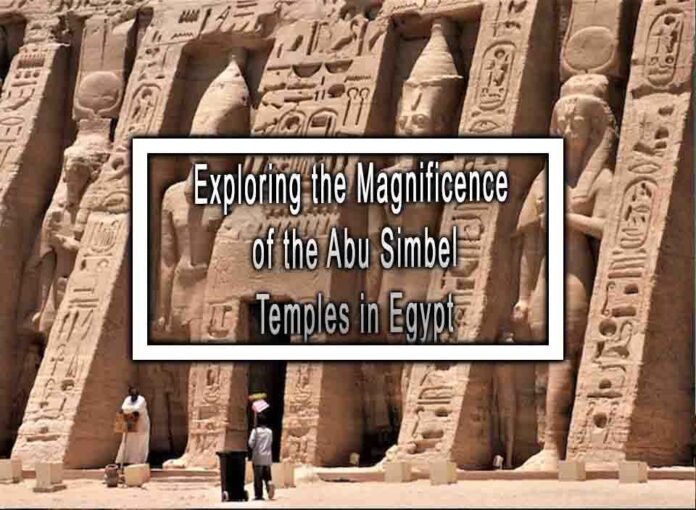The Abu Simbel Temples, located in southern Egypt near the border with Sudan, are two of the most magnificent and well-preserved ancient temples in the world. Built during the reign of Pharaoh Ramesses II in the 13th century BCE, these temples are renowned for their colossal statues, stunning architecture, and historical significance. Here’s an exploration of the magnificence of the Abu Simbel Temples:
1. Historical Background:
- The Abu Simbel Temples were constructed during the 19th dynasty of Egypt’s New Kingdom period, around 1264 BCE, by Pharaoh Ramesses II (also known as Ramesses the Great).
- These temples were built to commemorate Ramesses II’s victory at the Battle of Kadesh and to honor the gods Amun, Ra-Horakhty, Ptah, and the deified pharaoh himself.
2. Colossal Statues:
- The Great Temple of Abu Simbel features four colossal statues of Pharaoh Ramesses II seated on thrones. Each statue is approximately 65 feet (20 meters) tall and depicts the pharaoh in a traditional pose with his arms crossed over his chest.
- The statues represent the pharaoh in different stages of his life, from youth to old age, and serve as a symbol of his power and divinity.

3. Temple Layout:
- The complex consists of two main temples, the Great Temple and the Small Temple.
- The Great Temple is dedicated to the gods Amun, Ra-Horakhty, and Ptah. It features a monumental facade with the four colossal statues and a massive entrance adorned with intricate reliefs.
- The Small Temple, also known as the Temple of Hathor and Nefertari, is dedicated to the goddess Hathor and Ramesses II’s favorite wife, Queen Nefertari. It includes statues of the pharaoh and his queen.
4. Solar Alignment:
- Twice a year, on February 22nd and October 22nd, the rising sun illuminates the inner sanctum of the Great Temple. During these events, the sunlight penetrates deep into the temple’s interior, illuminating the statues in the sanctuary.
- This solar alignment is believed to symbolize the divine presence of the gods and the pharaoh.
5. Relocation:
- The temples were relocated in the 1960s to save them from being submerged by the rising waters of the Nile River after the construction of the Aswan High Dam. The relocation project was a remarkable engineering achievement and preserved these historic structures.
6. UNESCO World Heritage Site:
- The Abu Simbel Temples were designated as a UNESCO World Heritage Site in 1979, recognizing their cultural and historical significance and the successful preservation efforts.
7. Tourist Attraction:
- Today, the Abu Simbel Temples are a major tourist attraction in Egypt, drawing visitors from around the world who come to marvel at their grandeur and learn about ancient Egyptian history and art.
The Abu Simbel Temples stand as a testament to the architectural and artistic achievements of ancient Egypt, as well as the enduring legacy of Pharaoh Ramesses II. Their colossal statues and historical significance make them an essential part of Egypt’s cultural heritage and a must-visit destination for travelers exploring the wonders of the ancient world.











